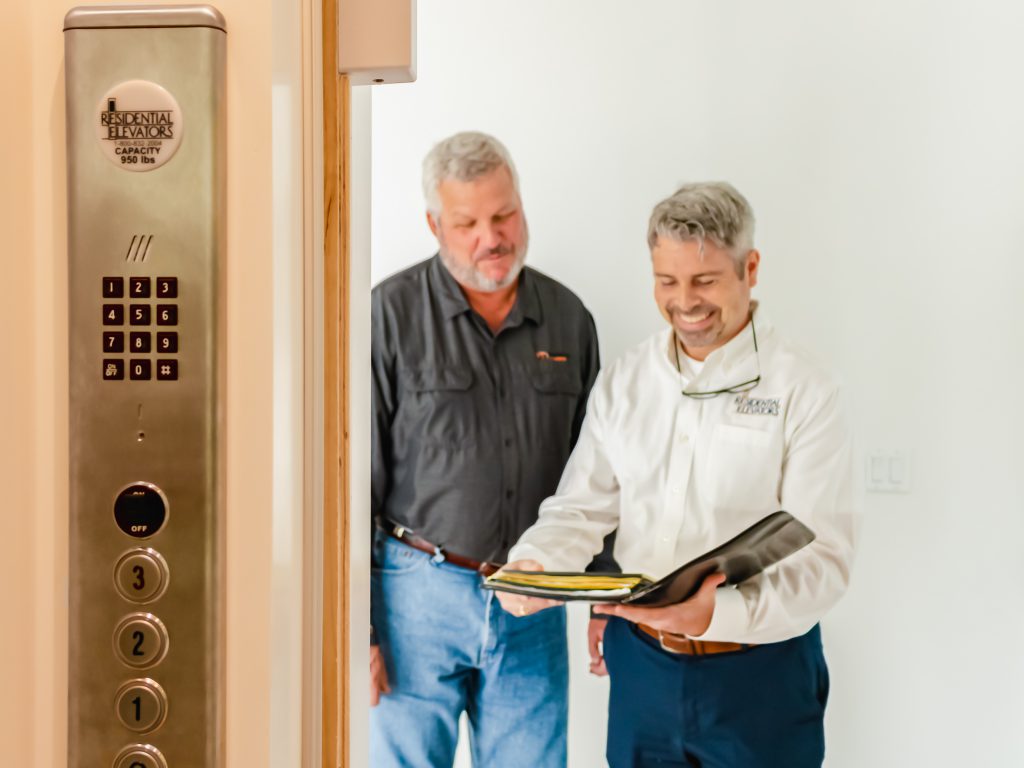After 20 years of business, our name, Residential Elevators, sometimes causes confusion when industry-articles reference private residence home elevators as “residential elevators”. Since this is a generic term used to define a home elevator we want to make sure our customers are aware that this, in no way, is in reference to the product manufactured by Residential Elevators.
We take our role as advocates for home elevator safety very seriously. Our employees install our elevators, and are often working in 40 ft high elevator shafts where a fall could cause serious injury. We also advocate for adherence to home elevator installation code requirements. We sit on the ASME committee making recommendations for code revisions, and continually stress the need for safe installation processes and safe usage of our elevators. If the elevator is installed properly and current codes are adopted and followed, homeowners can expect a lifetime of safe, smooth and convenient operation. In fact, after we’ve installed the elevator, we educate homeowners on the proper usage to insure their safety for as long as they own their home.
Many states have yet to adopt the ASME A17.1-2016 Safety Code. Residential Elevators supports the Consumer Product Safety Commissions position that all states should adopt the new code to better protect children using home elevators. Click Here to Read More

OUR Manufacturer representatives
Whether it’s a code compliance question or any other item regarding the safety of your home elevator, our manufacturer representatives are experts in this field. If you have any questions in regards to a home elevator, please contact us as we want to make sure you are getting the safest home elevator available.
With Residential Elevators, you can expect a lifetime of safe, smooth and convenient operation from your home elevator.
Important Safety Information Regarding Your Home Elevator (the 3” x 5” rule)
The so-called 3”x 5” Rule for elevator landings is an important section in the safety governing code for home elevators – ASME A17.1 Part 5.3 – Private Residence. Three inches is the maximum distance permitted between the backside of the closed hoistway door at the elevator landing and the edge of the threshold at that floor landing. Five inches is the maximum distance permitted between the backside of the closed hoistway door at the elevator landing and the lead post of the elevator car gate.
Older elevators may not comply with this rule and, like the federal government, Residential Elevators takes violations of this safety rule extremely seriously. This 3”x 5” Rule was implemented for the safety of all those who might use, ride on, or operate a home elevator. Its primary function is to ensure there is not a space where a small child or pet could stand or become entrapped between the closed landing door and the elevator gate. Whether or not you have a small child or pet presently living in your home, the violation could present a safety hazard to short-term guests (including children), current residents, and future residents of the home.
If your elevator has not been inspected for compliance with this rule (most residential elevators are not routinely inspected), please call us to schedule an in-home inspection as soon as possible.
If a violation of this rule is found, the 3” x 5” violation must be corrected. Because this is a safety violation, Residential Elevators will not be able to perform any additional service until the elevator landing doors are in compliance. Residential Elevators will serve as a resource for you (and/or your handyman or contractor) as you bring each elevator landing into full compliance with this safety requirement as soon as possible. The setting of the landing doors was originally done by the general contractor or finish carpenter subcontractors at the time the home was built. In most cases, bringing any non-compliant doors into compliance is a fairly straightforward process and can often be completed with the purchase of a space guard or door baffle for each affected landing. In some homes with older installations, additional work by a handyman will likely be required. If we can be of assistance to you or if you have any questions, please contact your Customer Service Representative, at 800-832-2004, option 4, or customerservice@rei.561dev.com so that we can schedule an inspection.


